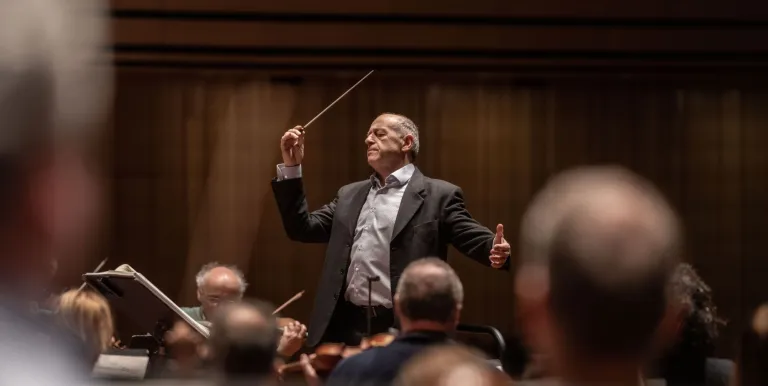one interval
Conductor:
Featuring:
Brahms
Hungarian Dance No. 10 in E major
Brahms
Piano Concerto No. 2 in B-flat major, Op. 83
Brahms
Hungarian Dance No. 7 in A major
Brahms
Symphony No. 2 in D major, Op. 73
A grim face, long beard, conservative music – that’s how Brahms lives in many people’s minds. On tghis occasion, the BFO paints a cheerful portrait of Brahms by performing two large-scale compositions, each accompanied by a Hungarian Dance. Pianist Nicolas Namoradze is a recurring guest of the Budapest Festival Orchestra. His performances have been hailed as “sparkling… sensitive and coloristic” by The New York Times and “ideally laconic and debonair, weighty yet exquisite“ by The Guardian.
Brahms became acquainted with Hungarian Gypsy music via Ede Reményi, and in particular the csárdás, which inspired the 21 dances Brahms referred to as arrangements. The works were an immediate success, but it was in their orchestral arrangements that they really became known. Only three of these were arranged by Brahms, such as the Hungarian Dance No 10 that will open the concert. The fast movement known as Presto is like a mere musical flash. The Hungarian Dance No. 7 to follow the interval is slightly more measured, playful, and contrasting in tempo. The main stylistic features of both dances are the contrasts and sharp accents.
“I have written a tiny piano concerto with a tiny and charming scherzo,” Brahms wrote of one of the most monumental works of his oeuvre. He started composing the concerto in 1878 and finished it three years later. The world premiere was held in Budapest and conducted by Sándor Erkel with the composer as soloist.
One of the reasons Brahms set aside the first drafts of the piano concerto was to write his Symphony No. 2 in a single summer. The tranquility of the beautiful Wörthersee, the setting in which he composed the work, is echoed in the music, where the pastoral mood prevails in contrast to the pains of Symphony No. 1.
Presented by: Budapest Festival Orchestra
-
We wish to inform you that in the event that Müpa Budapest's underground garage and outdoor car park are operating at full capacity, it is advisable to plan for increased waiting times when you arrive. In order to avoid this, we recommend that you depart for our events in time, so that you you can find the ideal parking spot quickly and smoothly and arrive for our performance in comfort. The Müpa Budapest underground garage gates will be operated by an automatic number plate recognition system. Parking is free of charge for visitors with tickets to any of our paid performances on that given day. The detailed parking policy of Müpa Budapest is available here.












